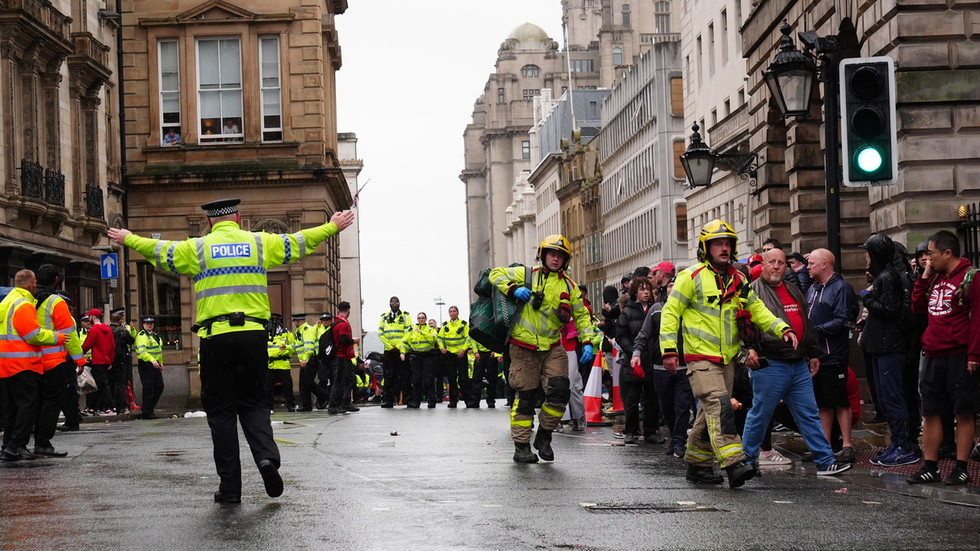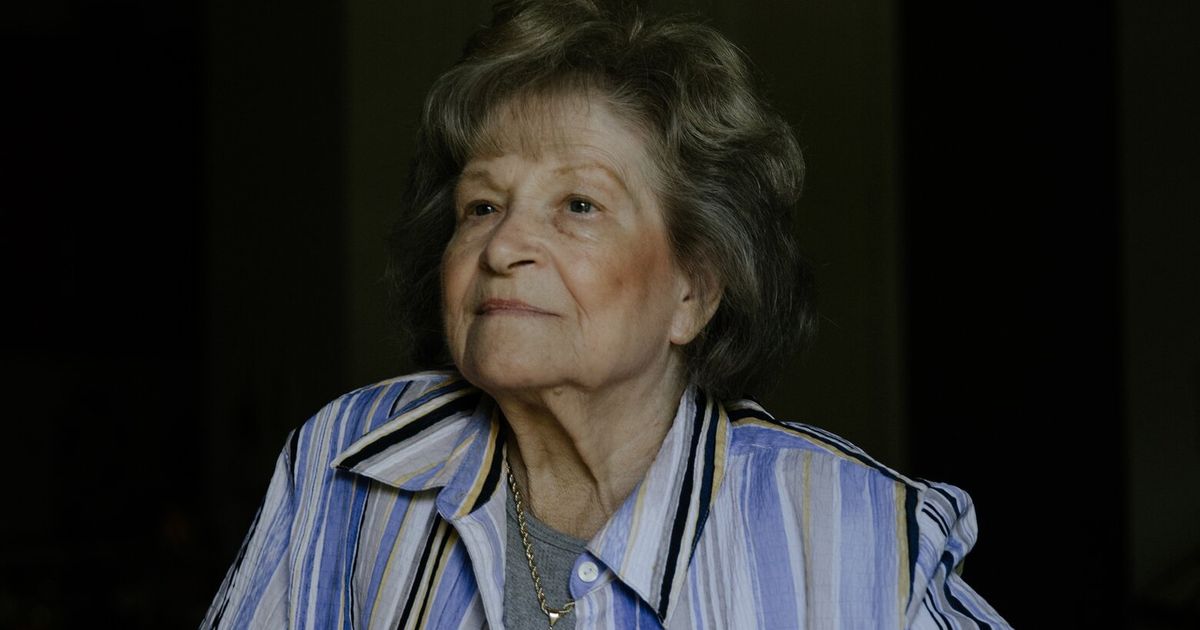EXPERT PERSPECTIVE — I arrived to Kyiv in January 2025, at a time when the war with Russia was almost three years old. My purpose was professional and deeply personal: to contribute what I could to Ukraine’s defense by introducing a course on national security strategy at the Kyiv School of Economics (KSE). I understood that I was not just arriving to teach a class. I was stepping into a nation’s moment of peril and possibility.
The official task was to design and propose a course on national security that could educate the next generation of Ukrainian leaders. Unofficially, I came to show solidarity and to reaffirm—through my presence and work—that Ukraine still had American friends willing to stand with them. I hoped that by doing something meaningful here, I might also give a voice to those Americans who want to be here to help but can’t.
I had traveled and lived in Eastern Europe and Russia before, and I knew I would not just change time zones along the way but cultures too. I left the United States on an American airline, transferring to a Polish carrier in Amsterdam, before boarding a train in Warsaw. Each transfer took me farther from my world in America.
From Warsaw I traveled to the border with Ukraine. There the train cars, built for use throughout western Europe, had to be refitted with wheels on wider axles to fit the different rail gauge (1522mm) of the East; a legacy of Russia’s empire. Signs changed. Languages changed. The only thing that wasn’t changing was the countryside. It remained the same as we moved through the winter night from Poland into Ukraine; dark forests of leafless birch trees alternating with open moonlit farmland. But the sensation of having left one world and entering another was real. Always in my travels to the East I have the feeling of coming to an edge, a precipice, as I move from the West and back again. Ukraine is trying to rid itself of that “edge” with the West – an effort that Russia violently opposes.

In Kyiv, I spent my first nights in a city center hotel. Like other inhabitants of Ukraine’s capital, I added an app to my smartphone that would sound an alarm when an air raid alert was issued by the government. The alarm ensures that even if you are far from the sirens, you will still receive the warning. My first night in Kyiv, the warnings came shortly after midnight. I dressed quickly and went to the front desk to ask where the ukrittya (shelter) was. As the woman at the desk came around the counter and started to walk me to the shelter in the parking garage below the hotel, I noticed that I seemed to be the only person in the whole hotel who had bothered to come downstairs. Being retired army and not wanting to appear afraid, I asked, “Am I the only one to come to the shelter?” She paused, looked kindly at me, and said, “Well let’s say you’re the first.” I laughed out loud at her attempt to soothe my ego.
Most of the people who live here are used to the air raids that come at night when Russian drones are harder to find and knock out. I learned the local custom of checking the military blog sites on the Telegram app for the type of threat an air raid was announcing – drones or missiles – before deciding whether to get out of bed and go to the shelter. (Drones are often waved off but missiles are taken seriously.) And over time, I began to sleep through the air raids, understanding that the real damage from the frequent alerts was the loss of sleep rather than physical harm. It may sound like carelessness, but most people who have lived a life responding to alerts or alarms – soldiers, nurses, police, firemen – know that a balance of reaction and disregard must be found. I found my balance for Kyiv. Of course, the farther east toward the front lines, the more that balance shifts from bed to shelter.

The Kyiv School of Economics is a relatively young university but growing rapidly from just 200 students a couple years ago to a projected 2,000 in two more. Students learn in English to help break the old ties to the East and cement ties to the West. I was asked to come to the school to create a course on national security. Ukraine has a national security council and a national security strategy, but in my research, I found no civilian school teaching how to create such a strategy. KSE is the first civilian university in Ukraine to teach on the subject.
The war has touched every corner of Ukraine and KSE is no exception. Some university faculty are away working in the government or serving in the military. The university sometimes works directly with front line units to improve their leadership and management training. Like all other Ukrainian universities, because of the war, KSE must also conduct almost a hundred hours of “pre-military” training and education for students at the school.

Ukrainians understand the bifurcated life of living in a country being invaded – something that most Europeans haven’t known for a couple generations. Throughout the eastern part of Ukraine, where government forces battle Russian troops on occupied territory, there is daily death and devastation. Living in cities like Kharkiv, Zaporizhia, and Sumy is truly life threatening. Farther west in Kyiv, there are nightly attacks by drones and missiles. But during the day, despite occasional daytime air raids, people move about the city in buses and Ubers; working, going to school, shopping. There is food in the stores, music in the clubs, and restaurants are open – at least until the mandatory night -ime curfew. Life can seem oddly normal until suddenly, a Russian missile targets a neighborhood and its residents.
Air raid alerts come every night, often more than a half dozen in a row. One night I counted 20 alerts. In February, Kyiv was hit with the largest drone assault since the full-scale invasion began. On April 24, Kyiv was struck by an even bigger attack with Iskandr ballistic missiles, Kalibr Cruise missiles, and drones. Twelve people were reported killed and 90 civilians injured. This time I wasn’t the first one in the shelter.
I spent my military career deterring and interacting with the Soviet, then Russian, armed forces. But I had not studied or met with members of the Ukrainian military and like many in the West, I was surprised at the success and innovativeness of Ukraine’s forces.

I accompanied one KSE visit to the 14th Unmanned Aerial Vehicles Regiment in a city to the east of Kyiv. The 14th Regiment is a small but strategically significant unit conducting long-range drone strikes into Russian territory. Ukraine’s use of drones in air and naval operations has been nothing short of revolutionary.
Short- and long-range drones have changed the character of the ground war from one of maneuver to a positional one (trench warfare). Today, Ukraine kills more Russian invaders with drones than with traditional fire. And with naval drones, Ukraine has chased the Russian Black Sea Fleet from its bases in Crimea negating one of Russia’s major strategic goals – dominance in the Black Sea region. Russia has also learned to use drones and both sides struggle now to maneuver.
What stood out to me about the 14th UAV Regiment was not only their effectiveness but their ingenuity. With limited resources, the regiment has developed their own methods for targeting, coordination, and training. They created their own business making drones. Decision-making mirrors western military doctrine more than post-Soviet hierarchies. Morale is high. These soldiers understand the strategic impact of their missions, and they want to do even more. So, they contacted KSE seeking management training for their specialized missions.

As a result of the war’s casualties and growth of the force, many new Ukrainian officers have been recruited to lead combat units. These officers, largely born after the fall of the Soviet Union in 1991, had been living as businessmen and entrepreneurs before the war. They are educated in western thinking and leadership methods. Now they have moved into mid-level leadership positions in the military commanding battalions and brigades. They are striving to employ the western kinds of management they know from their civilian careers but often run up against old thinking at the higher levels of the Ukrainian military.
This new generation of military leaders are seeking help to modernize training and leadership practices. They are clear eyed about the challenges they face—rigid hierarchies, outdated curricula, and a reluctance among senior leaders to delegate authority or tolerate innovation. They express particular interest in “mission command” principles, non-commissioned officer empowerment, and experiential learning based on U.S. and NATO doctrines. KSE is trying to help them by bringing educational materials to the front.
I shared my own experiences in those fields and, in some cases, was able to link commanders with trainers and resources that were already being offered by the U.S. and other western militaries. These Ukrainian officers understand that without institutional support from the top, lasting change will come slowly, but they are determined to start somewhere.
Experts are gathering at The Cipher Brief’s NatSecEDGE conference June 5-6 in Austin, TX to talk about the future of war. Be a part of the conversation.
One of the most insightful geopolitical exchanges I have had at KSE came not with a professor of international relations or a general, but an English teacher. KSE conducts its courses in English so it provides in-depth English instruction to students during their first year of study. I was talking with one of the English teachers about the now famous “blow up” between Presidents Trump and Zelenskyy during an Oval Office visit at the White House. I opined that a contributing factor was that Zelenskyy was obliged to speak in English. But the English teacher drew my attention to a different observation. The teacher said, “While Zelenskyy may be unlike Trump in many respects, he and Trump are similar in one major way – their decision-making style. Before he was president, Zelenskyy was a successful businessman in the entertainment industry. Like Trump, Zelenskyy is a transactional deal maker. He is not a diplomat or traditional politician. That was part of the reason he was elected. He was to break down the old structures and install new western ways. So, when the discussion in the Oval Office got heated, and the moment called for a diplomat from either side, there was none in the room.”
The teacher’s interpretation of what happened and why, was preceptive. Both presidents wanted an agreement that day but almost lost it because they could not break out of the approaches that had sustained them up to then.
There are at least two lessons in this story. The first lesson is for senior leaders: they must sense when to involve their trained specialists and experts in order to finalize agreements. The second lesson is that the Ukrainian people are keenly aware not only of their own political realities but also those of others.
President Trump’s push for a ceasefire and, separately, a minerals deal, has made the U.S.-Ukraine relationship bumpy to say the least. American military and other aid were temporarily turned off. The loss was a problem, but Ukrainians have been steeling themselves for this possibility since Trump’s election. They need U.S. help and they want a good relationship with the U.S., but they will not sign up for deals that will not last. The last decade of war with Russia has taught them that doing so just begets more war. The attitude was succinctly captured in February by a Ukrainian military blogger responding to questions from some followers on Telegram:
“Guys, please stop bombarding me with questions about what is happening and what I think.
I don’t think. I do.
I react calmly, because I did not expect anything else from this administration in the United States, and after the elections there I immediately understood what would more or less happen.
If you look carefully even at those whom they appoint, you will notice a tendency to appoint them not on the basis of professional qualities.
I don’t know what the “security guarantees” will be. I don’t really care. At this time the most important guarantee of safety are your friends, relatives and other acquaintances in the Armed Forces of Ukraine.
Right now, there is a slow but steady process to disarm any resistance and eventually finish off everyone. It was absolutely to be expected.
And when politicians of any level or country declare the “end of the war”, then you should know that this is hypocrisy.
What they call the “end” is a “pause,” and then both sides will begin to prepare for the next phase of this war. And remember while there is a “handful” (in fact a crowd) of thinking people in our country, in various positions, who will tear the throat of any Russian, we’ll be fine, no matter what the fuck happens.
I’m not trying to calm you down, it’s just that you underestimate yourselves, and us, a little, and no one has deprived us of our ability to control our own fate so far. We will survive all our grandfathers.”
Sign up for The Cipher Brief’s Nightcap newsletter: the best way to unwind every day while still staying up to speed on national security. Sign up today.
The Ukrainian people have, of course, a long history with Russia. It is a disservice for pundits to dismiss centuries of conflict between the two nations with shallow summaries and punch line epithets. The reality today is that Russia has been waging a brutal war against Ukraine since its invasion of Crimea in 2014.
In the fighting from 2014 to 2022 it is estimated that 4,000 Ukrainian soldiers have been killed. According to President Zelenskyy, another 46,000 Ukrainian soldiers have been killed since February 2022 [Kyiv Independent 13 Feb 2025]. For the same period, Russian deaths are a multiple of those numbers. Civilian deaths are an additional category. The overall deaths and casualties, civilian and military, are over a million. It is the largest European land war since WWII.

The war threatens not only Ukraine but European security and global stability. Anyone who thinks about the conflict strategically will understand that ending it, in a long-lasting way, is urgently necessary.
The country that has the biggest stake in the outcome, outside Ukraine and Russia, is the United States, whose power is based on the existing global systems of finance and international relations. It is in the United States’ vital interest to solve this conflict in a way that ensures a sovereign and viable Ukraine survives in a lasting peace.
The Trump administration’s approach to negotiating a ceasefire/peace deal in the war has been unconventional. But whether skillfully or luckily, we have arrived at a point where the U.S., Ukraine, and Western European states have a rough consensus on obtaining an unconditional ceasefire between Ukraine and Russia.
This is not a peace plan, but it may be all that can be hoped for at the moment. Russia for its part, wants a ceasefire to begin only after the sides sit down to talk about so-called “root causes” of the conflict. The disconnects between sides would seem to be insurmountable, but nevertheless, we are closer to a ceasefire than at any time since 2022.
In my opinion, if a ceasefire cannot be achieved under the present conditions, it is unlikely that it will be achieved for some time. Russia and Ukraine each remain strong enough that they can continue the fight. Their strengths may come from different sources of power, but they are sustainable.

In national security circles there are four recognized instruments of power – diplomacy, Information, military, and economics. But in Ukraine I have discovered a fifth. Culture is an instrument of power here.
Not the propagandistic culture of state television, but the quiet, steady defiance of identity. The renaming of streets and parks to reflect Ukrainian instead of Russian history. The efforts by Russian-speaking Ukrainians to learn the Ukraine language. The separation of Ukraine’s Orthodox Churches from the Russian Patriarchate. Ukraine has historically been “on the edge” between the West and the East. Its name comes from the Slavic word, “edge.” From the Russian perspective, it is the edge of the East. From Ukraine’s perspective it is the edge of the West. In fact, it sits atop the boundary of both. East meets West here. Roman Catholic parishioners pray in Eastern Orthodox-looking cathedrals. Signs are made with a mix of Cyrillic and Latin letters. Western-made automobiles drive past faded Soviet edifices mixed with modern office buildings. These cultural manifestations are not trivial. They are the reasons Ukraine fights, and they are a source of strength. They are tied directly to Ukraine’s first priority in its National Security Strategy:
“1. A person, his life and health, honor and dignity, inviolability and security are the highest social values in Ukraine. The implementation of this norm of the Constitution of Ukraine is the main goal of the state policy of national security.”
Read more expert-driven national security insights, perspective and analysis in The Cipher Brief because National Security is Everyone’s Business.
#Americans #Story #Kyiv











